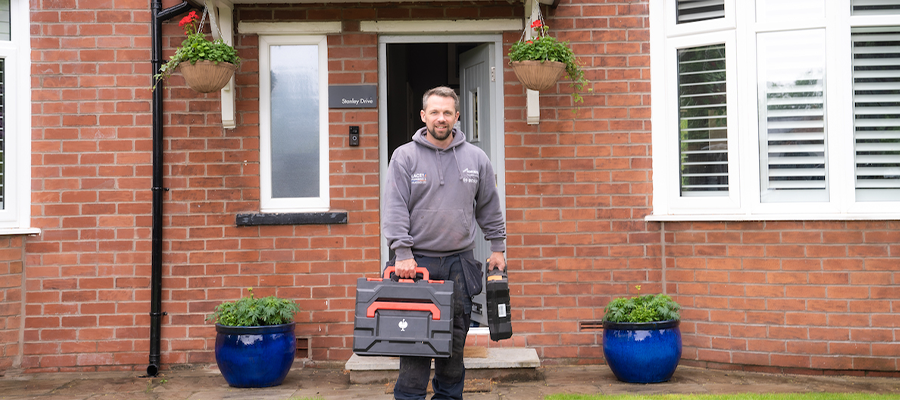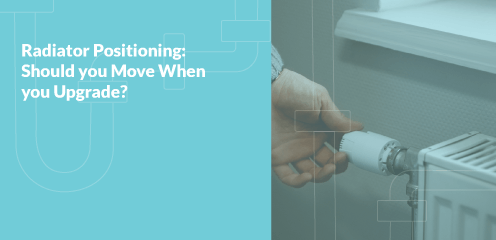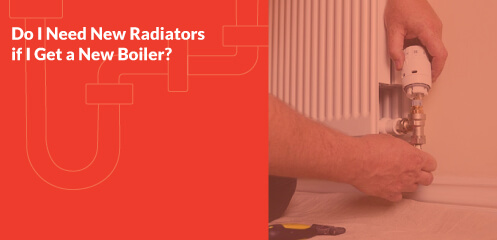A Guide to Underfloor Heating Thermostats
Underfloor heating is popular now, but to maximise its benefits, it’s worth gaining a good understanding of how underfloor heating thermostats work too.
Underfloor heating systems are becoming increasingly popular thanks to their efficiency and ability to provide constant levels of comfort at home.
However, to maximise its benefits, it’s worth gaining a good understanding of how underfloor heating thermostats work too.
Types of underfloor heating thermostats
When you’re thinking of installing underfloor heating, it’s also worth thinking about what type of thermostat you’d like.
There are a few types of underfloor heating thermostats:
What type of thermostat is best for underfloor heating?
Generally speaking, digital and smart thermostats are the best for underfloor heating.
Digital thermostats allow you to easily program your underfloor heating schedule for a 7 day period, and some even allow you to set the temperature too.
Smart thermostats allow you to do the same as a digital thermostat, however, they can also learn about your heating habits and behaviours. This means they can make decisions about your heating without needing any input from you.
They can also be conveniently controlled through an app on your phone, meaning you can turn the heating on even if you’re out of the house. Many modern smart thermostats also have the ability to track and monitor energy usage, providing you with data on your heating systems efficiency.

How do underfloor heating thermostats work?
Underfloor heating thermostats work in a similar way to a thermostat that you would connect to your combi boiler.
- 1The thermostat monitors the temperature of the room through a built-in floor sensor.
- 2If the temperature goes below a set temperature or it is changed manually, the thermostat will turn on the underfloor heating.
- 3When the temperature is reached, the thermostat will turn off the heating.
- 4The thermostat sends signals to the wiring centre, which then opens or closes the valve to regulate the water flow in the heating pipes.
Can you control different zones with underfloor heating thermostats?
Yes, you can control different zones with underfloor heating thermostats and it is often referred to as a ‘multi-zone’ system.
To create a multi-zone heating system, you will need to install multiple different thermostats in different areas of your home. You can then set different temperatures for various areas of your home, allowing you to heat specific zones independently depending on usage and desired comfort levels.
For example, you may choose to have your underfloor heating to be on more frequently in your living room compared to a spare bedroom.
Where should underfloor heating thermostats be positioned?
Your underfloor heating thermostats should be positioned on a wall, around 1.5 meters up from the floor and away from any heat sources. Having the correct location for your thermostat is an essential when it comes to making sure your heating system is running correctly and efficiently.
You should avoid putting your thermostats in direct sunlight, near drafts or heat sources since this can throw-off the temperature readings and result in inefficient heating.
What temperature should underfloor heating thermostats be set to?
Although this can vary slightly between households, the best temperature for underfloor heating generally ranges between 30°C to 45°C. It’s worth noting that this is the temperature of the water in the underfloor heating system, not the room temperature.
This temperature range will efficiently heat your room without overheating, ensuring that there is a comfortable ambient temperature without any risk of damage to your floors.
How to use an underfloor heating thermostat to increase energy efficiency
The most efficient way to use your underfloor heating is to maintain a consistent temperature that is tailored to the time of day needs.
Recommended ways to optimise your underfloor heating include:
Troubleshooting for underfloor heating thermostats
Listed below are some common issues you might experience with your underfloor heating and how you can troubleshoot them.
Underfloor heating not heating up:
Incorrect temperature readings:
Unpredictable heating:
Thermostat not responding:
If you are unable to resolve any of these issues after troubleshooting, please get in touch with our professional heating engineers at Lacey Plumbing & Heating.
Alternatively, if you have found a leak, our emergency team is here to help with same day assistance and will aim to be with you as soon as possible.

FAQs about underfloor heating thermostats
Is it cheaper to leave underfloor heating on all the time?
Since underfloor heating can take longer to heat up than your standard radiators, it is advised to keep your underfloor heating on at a low base temperature throughout the day during the colder months.
Keeping your underfloor heating on a consistent low temperature can be much more energy efficient than having to constantly fire it up from cold to hot. Gradually increasing the temperature is also a great way to keep costs low, since a quick increase in heating can be very energy draining.
Leaning on smart thermostats can also help massively when it comes to heating your home and keeping costs low, since they will quickly learn your heating habits.
Can you upgrade existing underfloor heating with a smart thermostat?
Yes, you can upgrade your underfloor heating with a smart thermostat, as long as your system is compatible with the smart thermostat of your choice and you have a smart device to control the settings.
Not all smart thermostats systems are the same, so we highly recommend leaving the installation to a professional. At Lacey Plumbing & Heating, we can install the smart thermostats for you, ensuring they are wired correctly and compatible with your underfloor heating system.
Can you control an underfloor heating thermostat remotely?
Yes, you can control underfloor heating thermostats remotely by using smart thermostats.
Smart thermostats work via Wi-Fi and they can be controlled through an app on your phone that is linked to the thermostats. This essentially gives you control from anywhere with an internet connection, which is particularly useful for heating your underfloor heating when you’re not at home.



